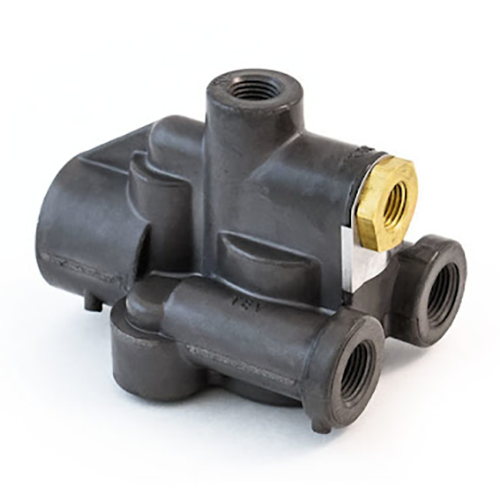No products in the cart.
Trailer Accessories
Understanding DOT Regulations on Trailer Emergency Valves
Every fleet owner, driver, and maintenance person is concerned about the safety of commercial trailers on the roads. A key safety assembly on a trailer is a trailer emergency valve, which is part of the air brake system and functions to actuate the trailer brakes in an emergency. Here at HK Trailer, we know the importance of maintaining safety standards, especially those regulated by the Department of Transportation (DOT).
This blog post will cut through the necessary DOT rules regarding trailer emergency valves and discuss why following these regulations is essential to your trailer’s safety and legal compliance.
What Is a Trailer Emergency Valve?
A trailer emergency valve is a component of the trailer’s air brake system. Its job is to engage the trailer brakes if they become disconnected from the tractor or if the air pressure drops very quickly. This function is to avoid the risk of runaway trailers and related accidents, protecting not only the drivers but also all other road users.
Why DOT Regulations Matter
The DOT imposes strict safety standards to ensure that commercial vehicles (such as trailers) are safe on public roads. Failure to comply with these laws is not only mandated by law but is critical to reducing the risk of brake failure and potential crashes.
DOT regulations require trailer emergency valves to operate effectively under all conditions of use, including emergency conditions.
Key DOT Requirements for Trailer Emergency Valves
Automatic Activation: The DOT requires a trailer emergency valve that will automatically apply the trailer brakes upon a sudden loss of air pressure or a separation between the trailer and the tractor. This feature is important as a safety feature to prevent the trailer from running away.
Durability and Testing: The valves must be capable of operation in severe duty environments of vibration, thermal, and corrosive assault. They must meet rigorous performance and durability standards as part of DOT certification.
Proper Installation: The DOT regulations detail correct installation to ensure the emergency valve activates as it is supposed to. If incorrectly installed, the valve may be damaged. This could result in valve failover or a long time to respond to a braking situation.
Inspection and maintenance on regular basis: The DOT mandates that trailer emergency valves be checked periodically as part of vehicle maintenance operations. This involves verifying that there are no air leaks, that the valve reacts, and that there is no physical damage to the part. Any faulty valve needs to be fixed or replaced without delay.
Meeting Federal Motor Vehicle (FMV) Standards: The trailer emergency valve must conform to FMVSS 121, which discusses air brake systems for heavy vehicles. The standard contains detailed requirements on emergency stopping performance and system stability.
What If You Don’t Follow Suit?
Violation of DOT rules can lead to grave punishment, such as fines, vehicle out-of-service, or elevated legal exposure in the case of an accident. But more important than obeying this safety rule is the fact that disdaining these safety rules of trailer operation puts lives at risk by hindering the functionality of the trailer brakes.
How HK Trailer Can Keep You in Compliance
HK Trailer is proud to offer superior-quality trailer emergency valves that comply with or surpass DOT requirements. We know safety, reliability, and compliance are of the utmost concern, and we aim to keep your fleet safe and on the road.
Final Thoughts
Trailer emergency valves are as essential as the DOT mandates to prevent accidents and protect everyone on the road. Keeping up-to-date and complying with these rules is critical for all commercial trailer users.
For professional consultation, quality parts, or service for any truck-trailer brake emergency valve, call HK Trailer today! Let us help you avoid trouble and keep your vehicles safe.

